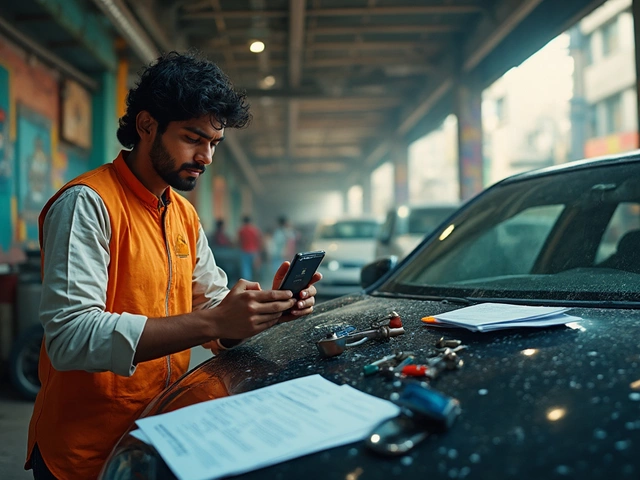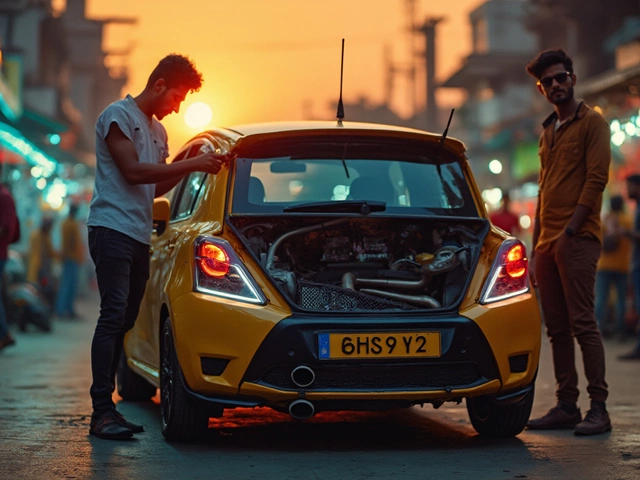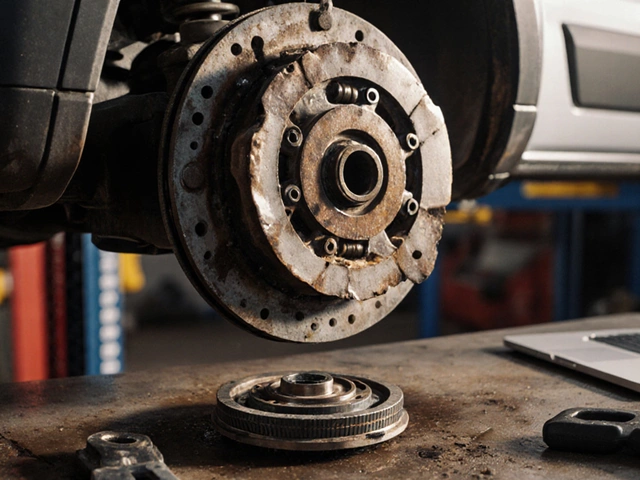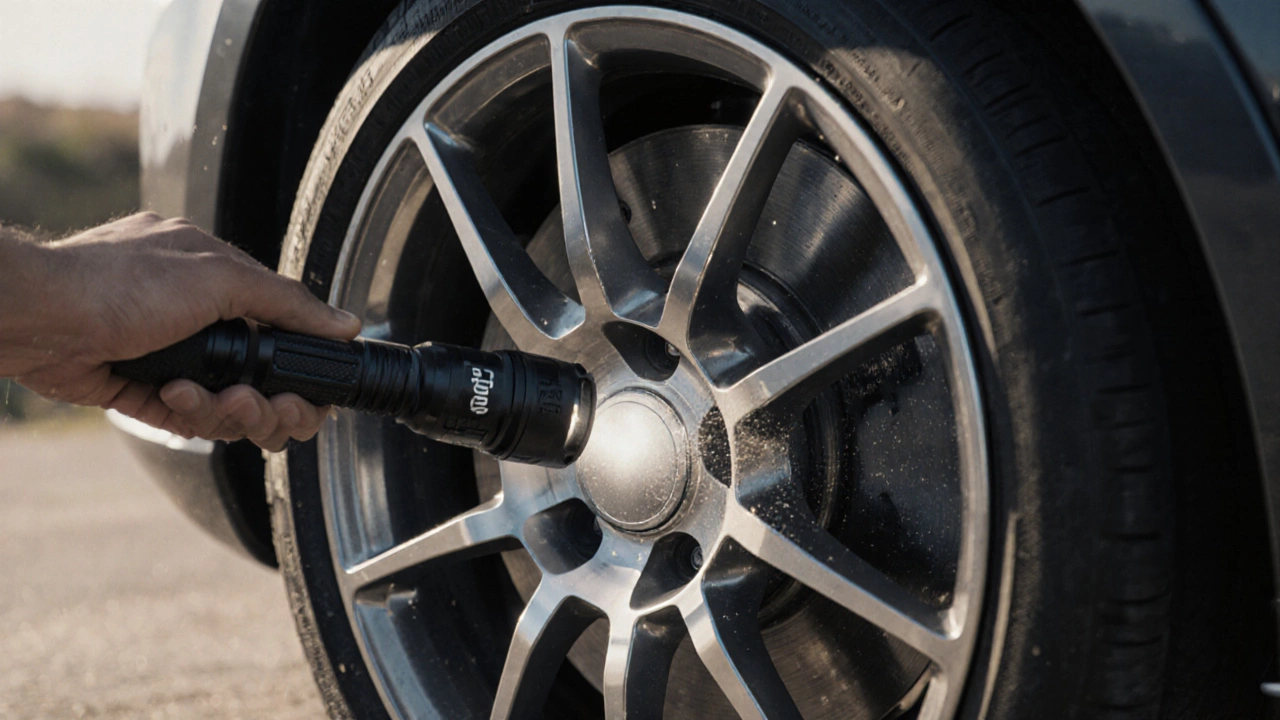
Brake Pad Checkup Tool
This tool helps you assess your brake pad condition based on common warning signs. Check the symptoms you're experiencing and see what action you should take.
Check Your Symptoms
Your brakes are the most important safety system on your car. If they fail, you don’t just risk damage-you risk your life. Yet most drivers wait until they hear a screech or feel the pedal sink before they check their brake pads. By then, it’s often too late. Knowing how to spot worn brake pads early can save you hundreds in repairs-and maybe even your life.
Listen for the warning squeal
Most modern brake pads have a small metal tab built into them. When the friction material wears down to about 2mm thick, that tab scrapes against the brake rotor. It’s not a loud noise like a car alarm-it’s a high-pitched, steady squeal that happens every time you press the brake. It’s designed to be annoying enough that you can’t ignore it. If you hear this sound consistently, especially at low speeds or when lightly braking, your pads are nearing the end of their life. Don’t wait for it to get louder. That’s not a warning-it’s a final call.Check the thickness
You don’t need to be a mechanic to check brake pad thickness. Most cars have wheels with enough space between the spokes to see the pads through. You’ll need a flashlight and maybe a ruler. Look at the pad pressing against the rotor. If the friction material is less than 3mm thick, it’s time to replace them. If it’s under 2mm, you’re already damaging the rotors. For reference, new brake pads are usually 10-12mm thick. A quick visual check takes 30 seconds. Do it every time you fill up with fuel. It’s that simple.Feel for vibration or pulsing
If your steering wheel or brake pedal vibrates when you slow down, it’s not just a bad road. Worn brake pads can cause uneven wear on the rotors. Over time, this creates thin spots and warping. When the pads press against these uneven surfaces, the brake system shudders. You’ll feel it in your foot, your seat, or even the steering wheel. This isn’t normal. It’s a sign the rotors are damaged-and replacing them costs two to three times more than replacing pads alone.
Notice longer stopping distances
If you’ve noticed it takes longer to stop than it used to, especially from highway speeds, your pads are likely glazed or worn thin. Friction material doesn’t work well when it’s too thin. It doesn’t grip the rotor properly. You might also feel the pedal go further down before the brakes engage. This isn’t just inconvenient-it’s dangerous. In wet conditions, a worn pad can double your stopping distance. Test it safely: on an empty road, brake from 60mph to 20mph. If it feels sluggish or takes more space than it used to, get your brakes checked now.Smell burning or see smoke
A faint, hot-metal smell after driving is normal if you’ve been braking hard. But if you smell something like burning toast or plastic every time you drive, that’s not normal. It means the brake pads are grinding metal-on-metal. The friction material has worn away completely. You’re now braking with the metal backing plate against the rotor. That generates extreme heat-enough to warp the rotor and even cause smoke. If you see smoke coming from a wheel, stop immediately. Don’t drive further. This isn’t a repair-it’s an emergency.Check for dashboard warning lights
Some cars have brake pad wear sensors that trigger a warning light on the dashboard. It might say “BRAKE” or show a symbol of a circle with dots around it. If that light comes on, don’t ignore it. It doesn’t mean your brake fluid is low-it means your pads are worn past the safety limit. Not all cars have these sensors, though. So even if your car doesn’t show a warning, you still need to inspect the pads manually.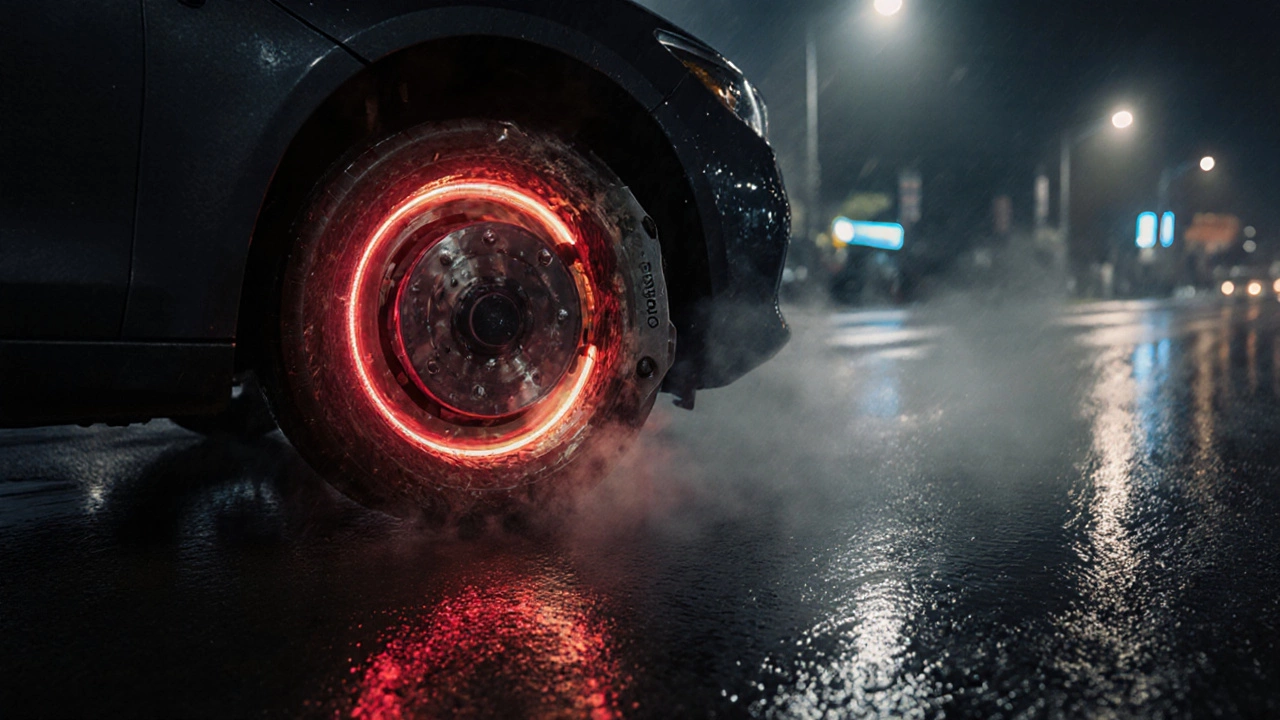
What happens if you delay replacement?
Waiting too long doesn’t just mean more expensive repairs. It means you’re driving with compromised brakes. Once the pads wear past the metal backing plate, you start grinding the rotor. That costs £200-£400 per axle to replace. If you keep driving, you can ruin the calipers too. Calipers are hydraulic and expensive-£500+ each. And if you’re unlucky, you could cause a complete brake failure. In the UK, driving with worn brakes can get you fined up to £2,500 and three penalty points per wheel. If you’re in an accident because of it, your insurance might not cover it.How often should you check them?
There’s no fixed mileage. It depends on how you drive. City drivers who brake often might need new pads every 20,000-30,000 miles. Highway drivers might get 50,000 miles or more. But you shouldn’t wait for mileage. Check them every 6 months or every 5,000 miles-whichever comes first. If you drive in hilly areas like the Cotswolds or Bristol’s steep roads, check them more often. Rain, dust, and heavy loads all wear pads faster. Don’t trust the “once a year” advice. Your brakes need regular attention.What to do next
If you’ve noticed any of these signs, don’t guess. Book a brake inspection. Most garages offer free checks. A good mechanic will measure pad thickness, inspect rotor condition, and check for fluid leaks. Don’t let them upsell you on rotors if they’re still thick and smooth. But don’t ignore their advice if they say both pads and rotors need replacing. It’s better to spend £300 now than £800 later.Brake pads aren’t something you fix when it’s convenient. They’re something you fix before it’s too late. A few minutes of checking every few months can save you money, stress, and possibly your life. Don’t wait for the screech. Look. Feel. Smell. Act.
How long do brake pads usually last?
Brake pads last between 20,000 and 50,000 miles, depending on driving habits. City driving with frequent stops wears them faster than highway driving. Heavy loads, hilly terrain, and aggressive braking also shorten their life. There’s no set timeline-regular visual checks are the only reliable way to know.
Can I drive with worn brake pads?
You can, but you shouldn’t. Driving with pads worn below 2mm is dangerous. You risk longer stopping distances, brake failure, and damage to rotors and calipers. In the UK, worn brakes can lead to fines, penalty points, and insurance claims being denied if you’re involved in an accident.
Do all cars have brake wear sensors?
No. Only newer cars (mostly from 2010 onwards) have electronic wear sensors. Older models rely on the metal squealer tab or visual inspection. Even if your car has a sensor, you should still check the pads manually-sensors can fail or give false readings.
What does it cost to replace brake pads?
In the UK, replacing brake pads on one axle typically costs between £120 and £250, including labour. Premium pads or performance brands cost more. If the rotors are damaged, expect an extra £150-£400 per axle. Always ask for a quote before work begins.
Can I replace brake pads myself?
Yes, if you have basic tools and experience. You’ll need a jack, torque wrench, C-clamp, and brake cleaner. The process takes 1-2 hours per axle. But if you’re unsure about bleeding brakes or checking rotor condition, it’s safer to leave it to a professional. Mistakes can lead to brake failure.
